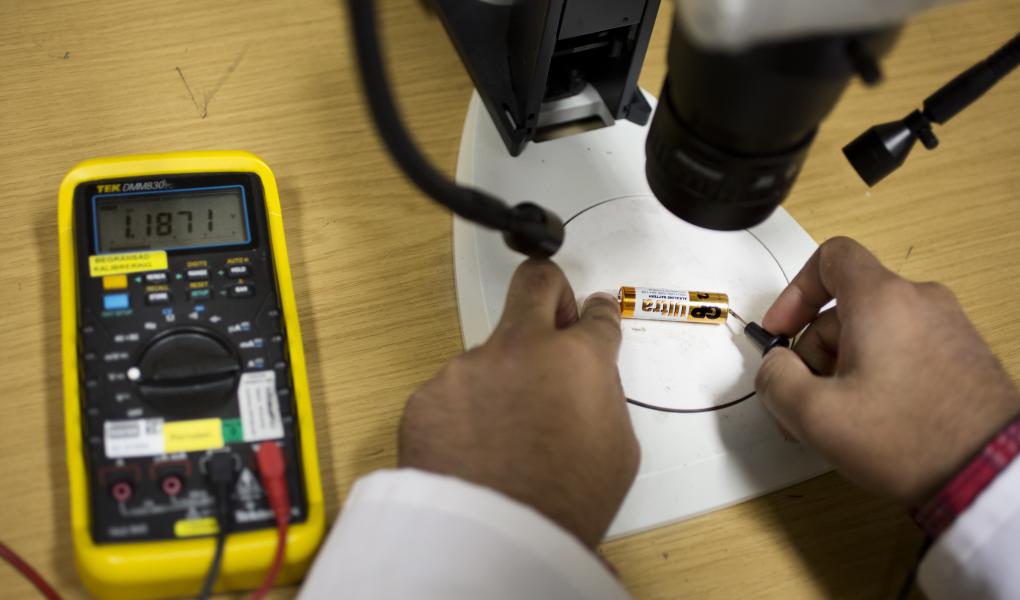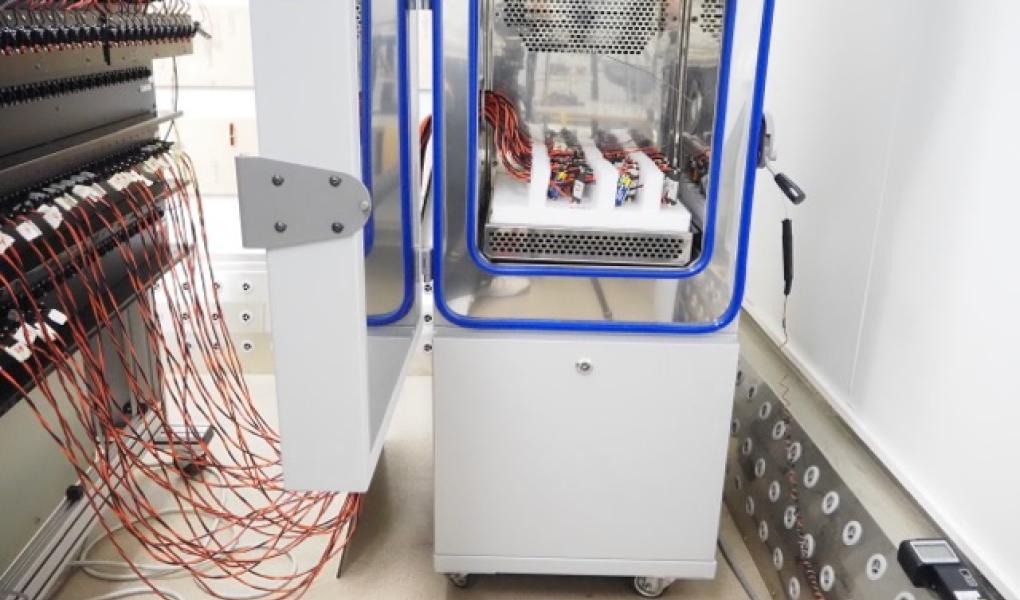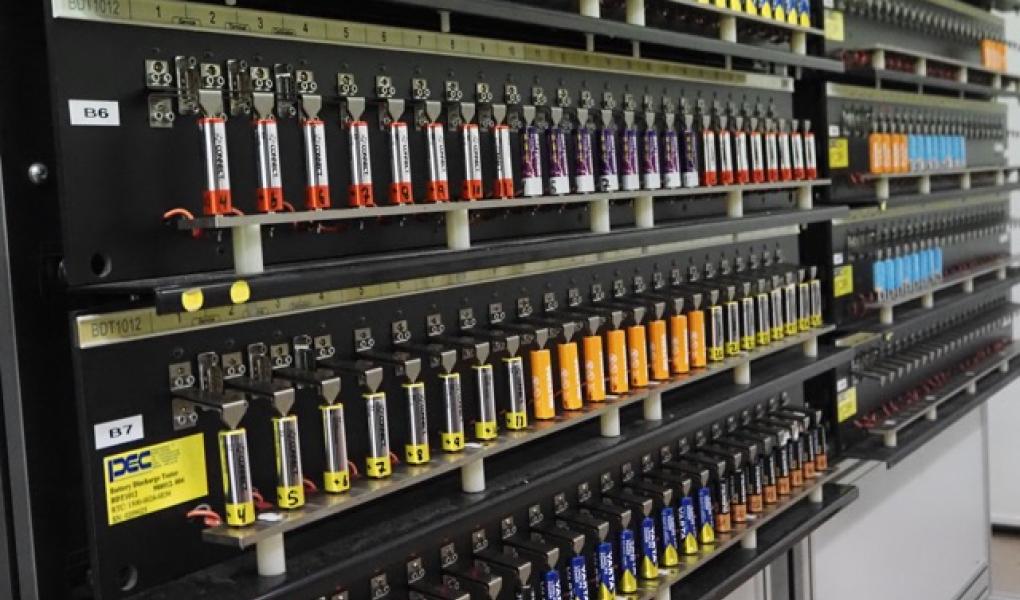The laboratory tests the batteries’ lifespan in different applications which place different demands on the battery. Nine batteries of each make are tested in each test. The tests are performed in accordance with standard IEC 60086-2. The test standard’s name for each application is provided in parentheses.
The selection comprises the most common makes of non-rechargeable AA battery sold in supermarkets, discount stores and electronics chains in the respective region.
Test method
Very low power consumption (radio)
The battery is discharged for four hours at a constant resistance of 43 ohms. The battery then rests for 20 hours before it is discharged again. The test is repeated until the end voltage is 0.9 V.
Low power consumption (remote control)
The battery is discharged for 15 seconds a minute for eight hours a day at a resistance of 24 ohms. The battery then rests for 16 hours before it is discharged again. The test is repeated until the end voltage is 1.0 V. Examples of devices with very low to low power consumption include clocks, radios, remote controls, computer mice, fire alarms and keyboards.
Low to medium power consumption (digital audio)
The battery is discharged with a load of 100 mA for one hour a day. The test is repeated until the end voltage is 0.9 V.
Medium power consumption (battery-operated toy)
The battery is discharged for one hour a day at a resistance of 3.9 ohms. The test is repeated until the end voltage is 0.8 V. Examples of devices with low to medium power consumption include portable speakers, games consoles, walkie talkies and battery-operated toys.
High power consumption (electric toothbrush)
The battery is discharged with a load of 500 mA for two minutes every 15 minutes. The test is repeated until the end voltage is 0.8 V. Examples of devices with high power consumption include electric toothbrushes, LED torches and digital cameras.
The applications in the test have been updated based on statistics on the household use of non-rechargeable AA batteries. The majority of non-rechargeable AA batteries are used in devices with very low to medium power consumption. Devices with very high power consumption almost exclusively use special rechargeable batteries (manufacturer specific). Applications with very high power consumption used in previous tests have therefore been replaced by a more nuanced, 5-point application scale from very low to high power consumption. It is important that the capacity of different batteries of the same make does not vary too much. Most battery-operated devices require multiple batteries which are connected in series and the device stops working when the worst battery runs out. The difference in capacity between batteries of the same make are therefore factored into the assessment.



